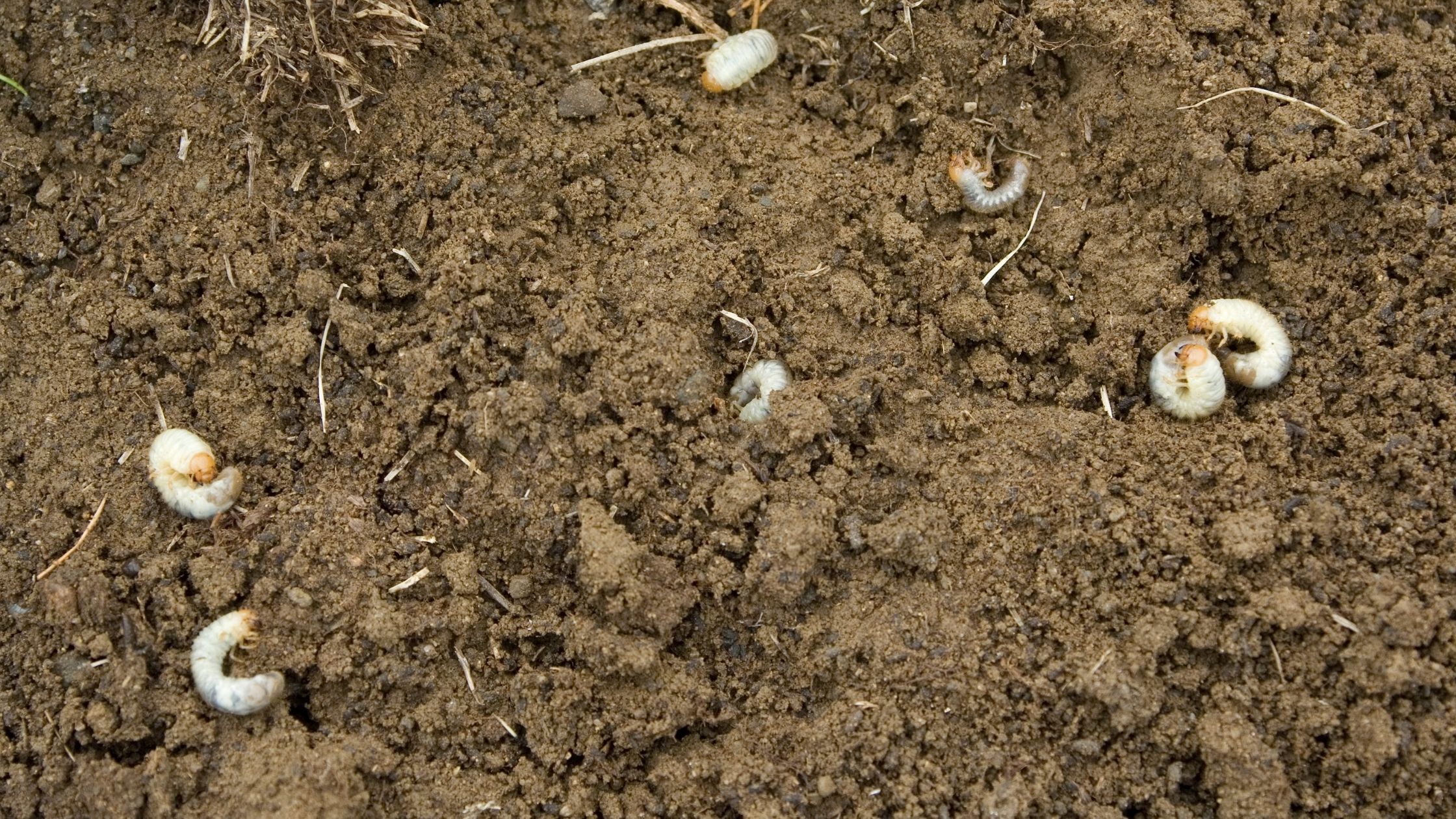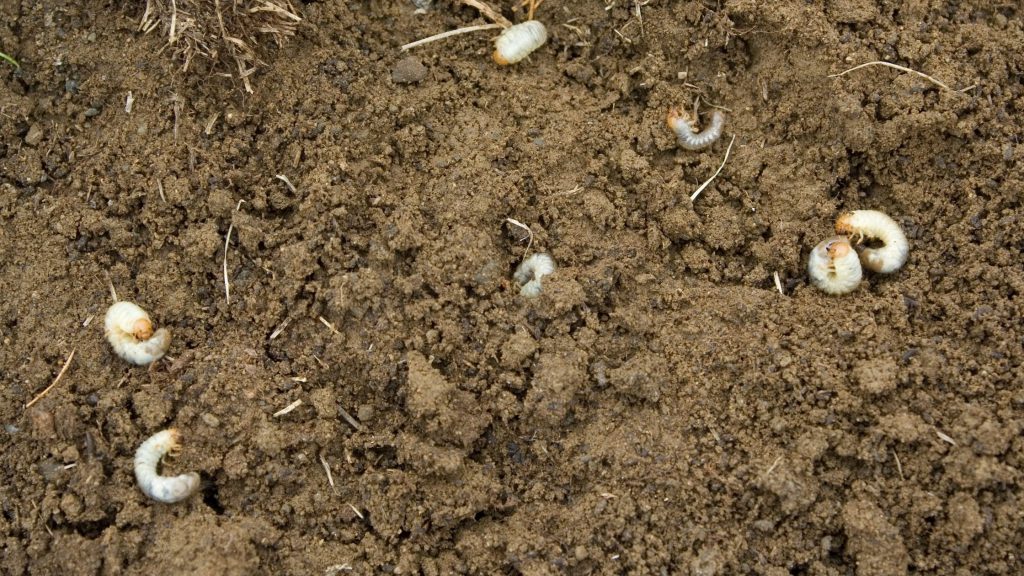When To Treat For Grubs In Central Texas?

When To Treat For Grubs In Central Texas?
Grubs are a common lawn pest in Central Texas that can really do a number on your lawn. They eat grass, causing unsightly brown patches. Grubs are the larval form of a beetle and may not be able to fly but they can run over 4 mph, which is pretty fast for a worm. They can be treated using insecticides but it is best to just avoid being infested in the first place.
Since grubs are the larval stage of a beetle it is important to identify the grub as well as the beetle so you can treat for both pests at once. Knowing what type of grub you have and when they will start to cause lawn damage will help you prevent an infestation from happening in the first place.
The most common type of grub found in Central Texas is one that has a brown body with yellow stripes on its sides. These little caterpillar-like larvae crawl around leaving brown streaks behind, often making a “grub trail”. The adult form of this pest looks more like a fly than a worm and tends to eat mostly dead plant matter such as leaves. You may notice them floating over your lawn or flying around the yard in groups in the late spring, early summer. The adult form of this grub is a June beetle and looks like a typical flying beetle with antennae, two pairs of wings, thick legs, and a noticeable yellow stripe down its back.
Another type of grub that causes lawn damage is the white grubs which have no stripes on its sides and is actually more cylindrical than it is round. White grubs are similar to a maggot though meaning it does have an elongated body with no visible legs or antennae. This white grub looks very different from when it was inside the ground as a larvae feeding on grass roots, meaning you will not notice any sign of white grubs until they are eating your grass above ground level.
Warning
Grubs, which live under the soil’s surface and eat grasses’ roots, can harm a lawn. When a grub infestation grows out of control, you may see patches of dead or dying grass in your yard.
Healthy grass can withstand up to 5 grubs per square foot, but once they reach beyond that margin, the damage is noticeable. Damage occurs when there are more than 6 to 7 grubs per square foot.
When to treat for grubs in Central Texas:
The best time of year to use grub control is as soon as you notice the lawn being eaten by a grub problem. A systemic insecticide will work its way through the grass blades and down towards the roots, protecting your grass from larval beetles and larvae that are feeding on the roots of your yard. It is very important to read the labels on the grub control products before using them so you fully understand how to properly apply it. Some require watering in after application while others should not be watered directly afterward.
Once you have treated your yard for grubs it is time to eliminate them from your lawn and prevent any future grub damage. The adult beetles tend to be attracted to light, which makes them a lot easier to catch once they are flying around in the late spring and summer months. You can use a beetle trap or just turn on the backyard lights at night when you see these bugs flying around looking for mates. You should continue turning on the lights until all of the June beetles have found a mate or died off for the season. This will keep June beetles from mating and laying eggs in your yard, causing an infestation next year too. Also mowing regularly tends to deter June beetles from entering your yard, so keep that in mind when planning your mowing schedule.
There are several options for controlling grubs without using harmful insecticides on your lawn. It is better to use these natural methods if you need to treat for grubs in Central Texas than it is to spray the yard with chemicals, even though chemical treatments will work. The best time of year to apply insecticides and herbal controls is during the spring as soon as grub damage begins. If you see adult beetles flying around or larvae feeding on grass roots it is important to get a handle on your problem before the larvae start causing more severe grub damage to your lawn.
How To Treat For Grubs In Central Texas Naturally?
In short, the temporary solution is not to have your lawns treated with chemicals. Your best long-term strategy is to change the landscape by adding diversity to where you have grass around your house. Add some native plants as well and provide some relief from the monoculture. Grubs naturally feed on certain plants, so if you have more of those around your house, they might not go for the grass.
That isn’t to say that all grub control is bad or even evil. If we want a healthy lawn and don’t already have native plants in our yard, then as a temporary fix or just for aesthetics (in which case we don’t mind the pesticides) you can have your lawn “tipped” (fumigated with non-releasant chemicals) to kill off most of the grubs.
It’s best for this to be done before June, but sometimes if needed it can be done mid-summer. This is because grubs tend to feed more in the fall and winter, then pupate underground over the winter and emerge as beetles in the spring/summer. Anyway, it’s important to not let your lawn get too far gone before trying to treat it for grubs–the larvae come out of the ground easier if there is no grass to mow and keep down.
Treatment of grubs with pesticides tends to be necessary in certain situations, usually because it gets out of control quickly when it is not tended to. One common situation where you might have a problem with grub damage is if your lawn is adjacent (or in the middle) of your vegetable garden. It’s pretty normal for grubs to eat the roots of your vegetables, and even though you might think “oh, it’s just one plant”, those grub holes can damage your veggie plants pretty severely.
One natural solution is to use the naturally occurring nematode Heterorhabditis bacteriophora, which are microscopic in size and invades grubs. The worms release bacteria that kill them, but it may take up to three years for them to be completely effective in ridding your yard of grubs.
-For the best results, apply beneficial nematodes in the late afternoon hours and water lawns immediately after.
-Beneficial Nematodes may be purchased from locations such as gardening stores, catalogs, or online.
-In order for these worms to proliferate in grub bodies they must first invade them while during the day.
Another situation is if you have a large area of lawn with many trees around it (or even in it). There are several species of grub that eat the roots of both broadleaf and coniferous trees. Because it’s pretty obvious to me when my lawn starts looking like it has been chewed up, I usually try to mow often enough that I don’t have a big problem with grubs, but if you can’t tell then or you have a large area of grass then you could probably use some grub control.
We prefer to avoid commercial pesticides and try to use methods that will repel grubs but won’t harm the environment. We would much rather kill grubs naturally, by trapping them or introducing predators that eat them. If we don’t mow our lawns for a while then they will naturally have more predators that eat grubs, and growing native plants in your yard can be an easy way to provide the habitat that certain insects need.
If you live in the Austin area and are looking for professional lawn care service, give Grass Works Austin Lawn Care a call to schedule your free consultation at (512) 797-1640 to learn more about our services or request an appointment online via the form below.

Ferris MyCue is the founder and owner of Grass Works Lawn Care, LLC located in Leander, TX. As a former firefighter who maintained yards on his days off, he saw a need for a dependable, local maintenance company that knew the hill country climate and could deliver quality landscaping services for a reasonable price. Since 2007 he has used his leadership to grow the company into one of the top landscape maintenance companies in Austin and surrounding areas offering landscape maintenance, design, and irrigation services to both residential and commercial clients. Ferris is also a member of the Seasonal Employment Alliance (SEA) and an active participant in advocacy efforts to help promote cap relief.
